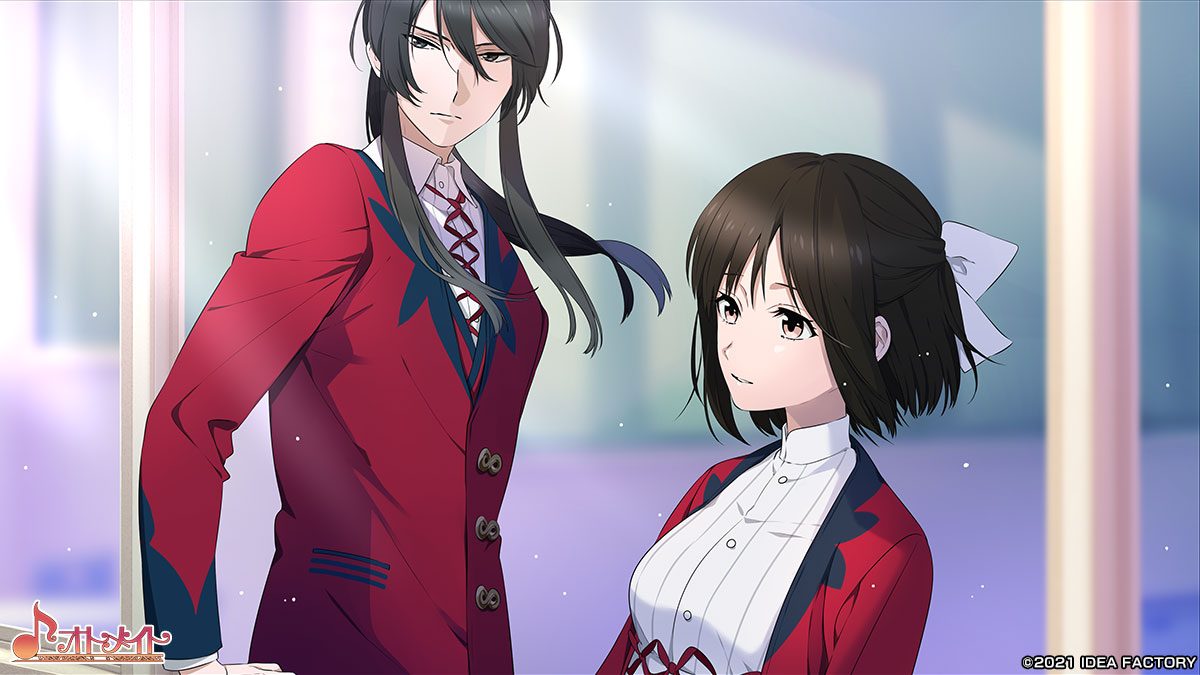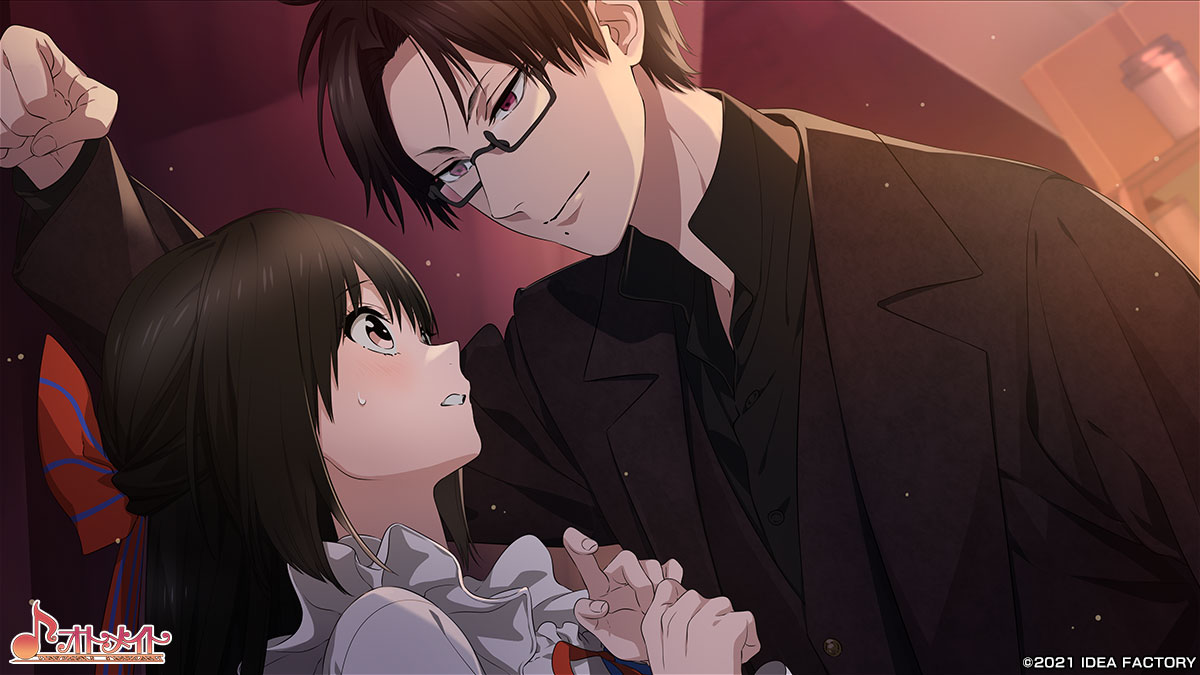The world of otome games is populated by all sorts of stories and casts, from lighthearted rom-coms to gut-wrenching historical dramas. Paradigm Paradox enters the fray with magical superheroes in tow and brandishes them with flying colors. It ticks the boxes for an action-focused title whose futuristic setting hides many mysteries and an adorable romance in a high school setting. Juggling all these parts isn’t always easy, but Paradigm Paradox pulls off the feat far more often than not and always maintains an endearing exterior while it does so.
The first—and primary—component of the game’s world that may leave your head swimming is the extensive cast of great characters. Their greatness comes in the form of both writing and numerically. There are eight total love interests in Paradigm Paradox: four heroes the protagonist joins forces with once her superpowers awaken, and four villains she learns to see eye-to-eye with. In the realm of otome, there’s almost nothing more painful than seeing a character who ends up as nothing more than a side character with no route of their own. In this regard, Paradigm Paradox doesn’t disappoint: not only is there a route for each of the eight case members—plus an additional “grande finale” mini-route—but they’re each the same number of chapters. No love interest feels shoehorned in or left to the wayside. They even, with the exception of one, all have an equal number of base CGs.
It’s especially welcoming to see this lack of CG discrepancies in Paradigm Paradox because its art is too darn cute. The characters, male and female, are downright adorable, and the fellas get some outfit variations to boot. The artwork’s crisp linework and vibrant colors with clean cel shading make every scene a visual treat and make the CGs all the more rewarding to unlock. Intimate scenes and other key character moments, such as sharing a meal with the otherwise callous Hyuga or meeting Kamui’s beloved relative for the first time, are beautifully illustrated and draw out each character’s charm. Other minor moments, such as walking hand in hand with Ibuki, aren’t given full-blown CGs but a small cut-in that serves to breathe further life into the game’s routes.

The routes themselves are jam-packed with conflicts of the grand and interpersonal variety. It’s here that Paradigm Paradox is, paradoxically, at its strongest and weakest. With a whopping eight love interests who all get the same amount of time in the limelight, the game’s routes are relatively short compared to the usual otome game. Although there are various endings along the way, each love interest’s route comprises four chapters. Their short length is noticeable, but they don’t feel incomplete by any means. The game takes place in the enclosed colony of Theta, isolated from the inhospitable outside world. This setting comes rife with unsavory scientific schemes, mysteries of momentous magnitude, and introspection into the matter of one’s humanity.
In other words, there are plenty of meaningful conflicts in this story, and Paradigm Paradox doesn’t cut any corners. Each love interest’s route focuses on a different aspect of Theta’s corrupt systems as the protagonist and man of the hour overcome the myriad challenges of attempting to right them. These conflicts feel properly fleshed out and resolved appropriately—but at a cost. Taking on a very “hopeful for the future” outlook, the routes end just before major change truly takes hold. The routes certainly feel complete thanks to their handling of conflict resolution, but they simultaneously feel as if they’ve only just begun.
A similar phenomenon occurs with the underlying romance of each route, although it isn’t nearly as pressing, thanks to the adorable execution. Through the character interactions, the budding romance between the protagonist and the love interests feels very smooth and natural, especially thanks to the game’s proactive protagonist. She frequently states outright the love interests’ insecurities or emotions they’re bottling up while also keeping room for her own introspection. In addition to the actions she takes as the newest member of the superhero group Blooms, her steadfast and often blunt personality helps push the love interests’ character development forward. These interactions form the solid foundation over which the characters’ relationships build and lead to plenty of squee-filled moments, including, but not limited to, numerous instances of kabedon.

The plethora of cute and tender moments between the protagonist and love interests join with narrative revelations that ensure that Paradigm Paradox remains serious when need be in spite of its candy-colored exterior. Because there are so many mysteries surrounding Theta and the outside world, and the love interests each have stakes in the matter, no one route feels more important than any other. Certain details come up in one route that get fully resolved in others in a way that makes each storyline feel worthwhile, while also offering a lot of freedom in player approach. While there’s certainly a “recommended route order” out there somewhere, Paradigm Paradox works exceptionally well as a game to approach on your own terms, completing routes as you prefer and picking up your dropped jaw as cross-route revelations come to light, then basking in the fruits of your labor as specific character details take on new meaning in the subsequent routes you play.
Getting through each of these routes is also welcomingly simple, thanks to the clarity of the game’s parameters and the easy-to-follow flowchart. The ways “affection” and “ability use” affect the route’s endings are straightforward, so when you pick a flowchart node to enter, you can easily come to your own conclusion about how to set the parameters for what you want. Discovering everything Paradigm Paradox’s world has to offer and unlocking all of the endings and CGs in an entirely stress-free way is a fantastic bow to wrap around this extravagant package.
Yes, the cast is so charming and the worldbuilding so intriguing that it’s hard not to wish each route had a few extra full chapters and not just bite-sized unlockable post-game skits. But Paradigm Paradox is very much a complete package—one that knows when to be serious yet is still adorable enough that you may need to call up a dentist once you’re done. As flawed as its world’s systems may be, it’s one location that is definitely worth a visit.


